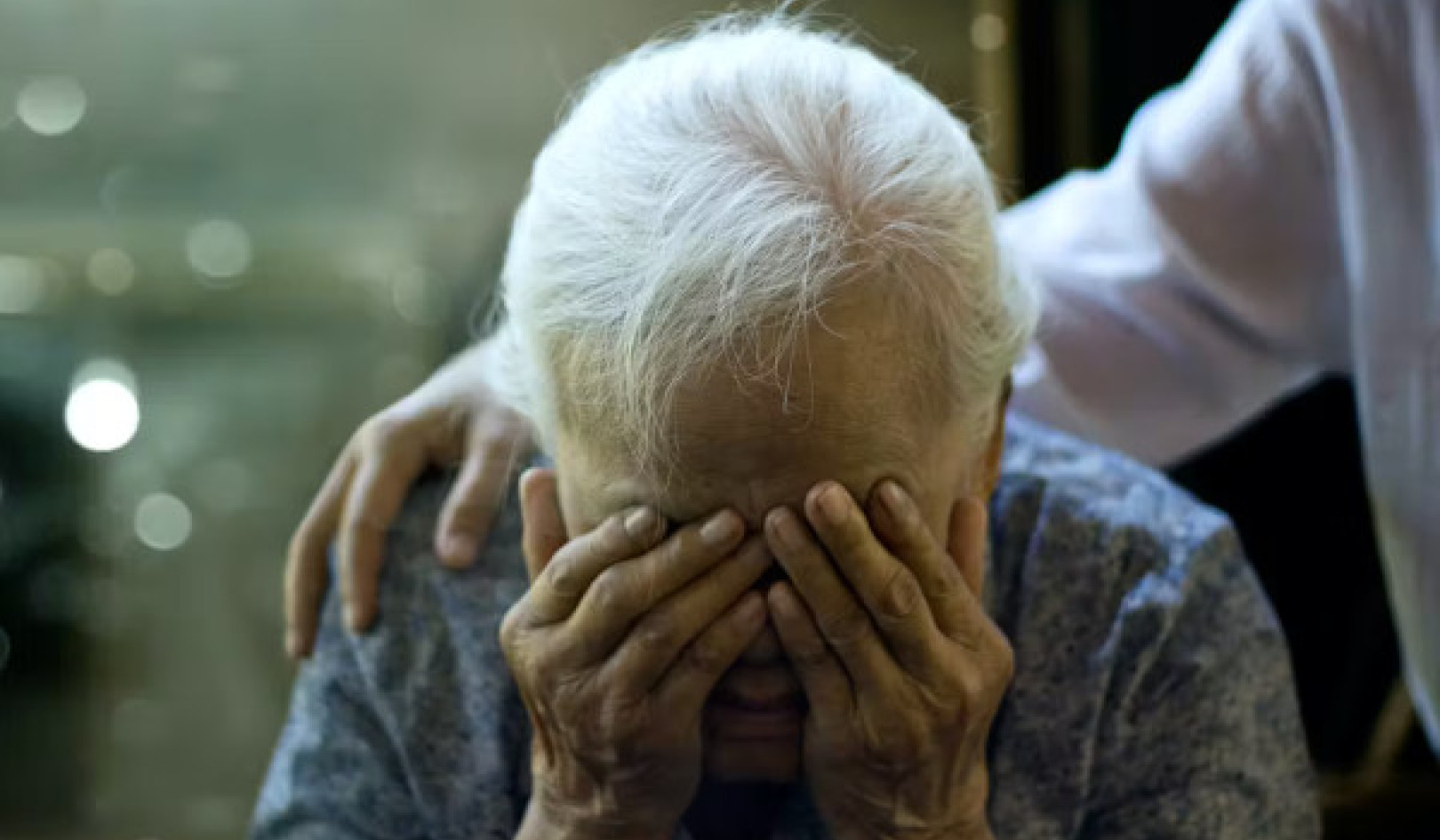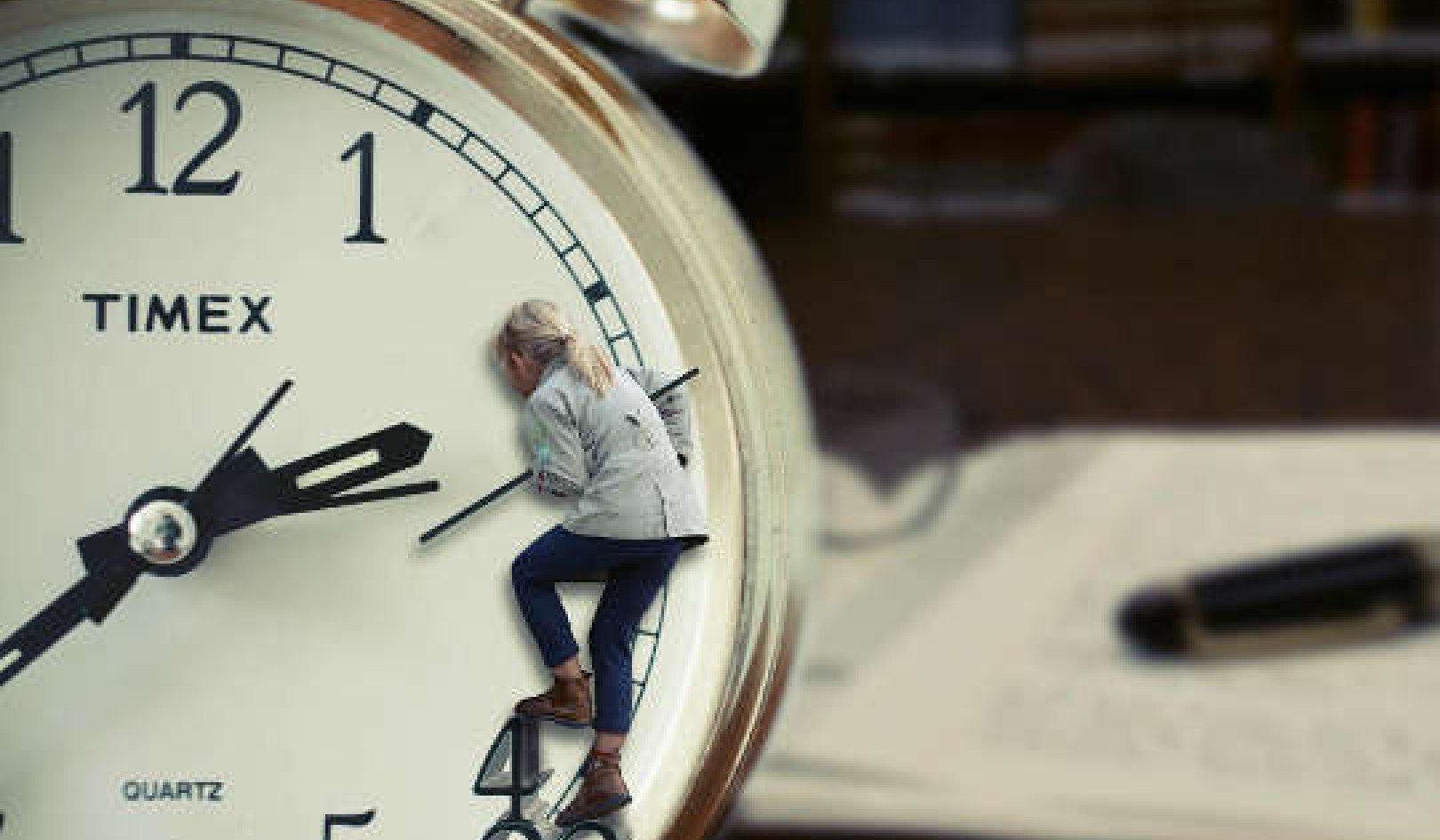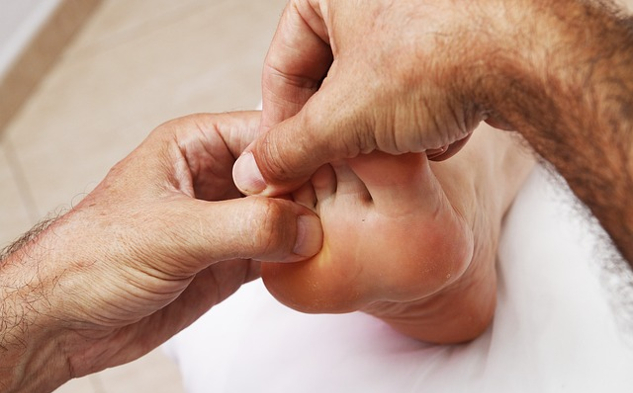
Image by Milius007 from Pixabay
Foot reflexology, like all lymphatic draining methods, is a therapeutic approach that makes it possible to work directly on the lymphatic system. It can also reach lymphatic organs in the depths of the body, such as the Pecquet cistern, tonsils, and spleen. Foot reflexology acts at a distance on the organs, via the intermediary of the nerves, by massaging the reflex zones that are located primarily on the soles of the feet.
There are, however, a few points on the top of the feet and on the ankles; this is the case for the reflex zones connected to the lymphatic system.
Foot reflexology zones are small areas on the skin’s surface that are terminal points for nerves from different organs. Each organ is therefore connected to a specific zone of the skin. Because of this linkage, the deterioration of the health of an organ will have repercussions on the reflex zone; it will become sensitive and even painful to the touch. The degree of pain the reflex zone experiences is proportionate to the seriousness of the disorders suffered by the organ.
However, the connection between reflex zone and organ is not unidirectional. The massage of a reflex zone also sends information to the organ connected to it. This is indeed a reflex action; the organ reacts automatically to the stimulation transmitted by the nerve. The effect of this stimulation is to activate the blood circulation of the organ involved, stimulating elimination of the toxins that are congesting it and preventing the organ from functioning properly.
Reflex massage intensifies the work of the lymphatic organs whose reflex zones are massaged. This improves not only lymph circulation but the defensive and detoxifying capacities of the lymphatic system as well.
The Reflex Zones of the Lymphatic System
Massage of the foot reflex zones is done with the help of the thumb or phalanx joint of a finger, generally the index finger. The reflex zone selected is then rubbed in a circular motion with varying pressure. Smearing the zone with lotion beforehand will make the massage easier. In the beginning the treatment should last only a few minutes (two to five). It should be performed on both feet given the fact that all organs have two reflex zones, one on each foot.
The location of the lymphatic system reflex zones is shown in the illustrations below. A small anatomical explanation is also provided. The sense of touch will allow you to complete this information and find exactly where the reflex zone is located. The zones that need to be massaged are generally painful when pressure is applied to them.
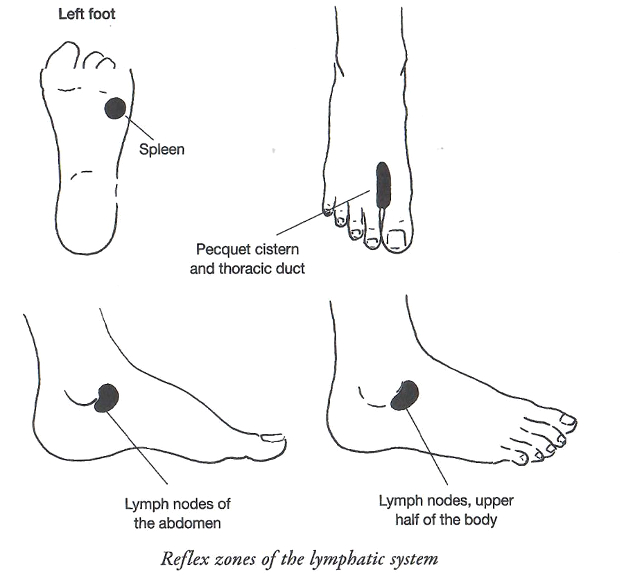
The pain caused by toxins that have collected in the reflex zones can make the zone hurt even when it is not being massaged, indicating that toxins have accumulated in not only the ailing organ but in its reflex zones as well.
How To Massage the Reflex Zones
In the beginning, massage of the reflex zones is performed gently so as not to cause the patient too much pain or release too many toxins at one time. When a lot of toxins enter the blood at the same time, the body can be temporarily overwhelmed and manifest a variety of disorders, such as headache, nausea, irritability, insomnia, or fever. These disorders are not very serious, but they are unpleasant, so it is better to avoid them. Therefore, this circular rubbing massage technique should be applied more strongly only gradually so as to increase the strength of the massage without reaching the discomfort zone.
The duration of reflex zone massage increases over time. From two to three minutes per zone in the beginning to ten minutes, then to twenty or thirty minutes. One massage session a day is the normal rhythm, but two or three shorter sessions a day have also proved beneficial. The stimulating effect of a session, which necessarily fades over time, is thereby relaunched the same day with more sessions.
The first effects on the lymphatic system can appear quite quickly, after a week or two. Several months are needed, though, to get profound results.
Reflex zone massage is something everyone can perform, and the technique is easy to learn and self-administer. It is also possible to turn to one of the many therapists who practice this treatment.
Outline of the Lymphatic Zones
-
Reflex zone of the spleen. This area stimulates this organ’s functioning. The zone is located on the bottom of only the left foot.
-
Reflex zone of the Pecquet cistern and the thoracic duct. This area stimulates the circulation of lymph in these two organs and thereby in the rest of the body. It is located on both feet, in the hollow spot between the first and second metatarsal bones.
-
Reflex zone of the abdominal lymph nodes. This area drains the legs, abdomen, and pelvis. It is located on the top of both feet in a small hollow just before the inside of the anklebone.
-
Reflex zone of the thorax lymph nodes. This area drains the upper half or the abdomen and the head. It is on top of both feet in the small hollow just before the outside of the anklebone.
What We’ve Learned
Several reflex zones on the feet are connected to the lymphatic system. By massaging these zones regularly we can directly sustain and intensify lymphatic action.
English Translation ©2023. All Rights Reserved.
Original French language edition, Copyright 2021.
Adapted with permission of Healing Arts Press,
an imprint of Inner Traditions International.
Article Source:
BOOK: Lymph Health
Lymph Health: The Key to a Strong Immune System
by Christopher Vasey N.D.
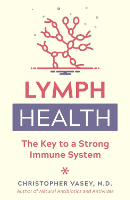 In this practical guide to supporting your lymph health naturally, Christopher Vasey explores the essential role played by the lymphatic system in your overall health and offers self-care methods for strengthening and maintaining this important part of your body’s immune system. Explaining how to improve the function of your lymphatic system, the author details 12 natural therapies to support your lymph health.
In this practical guide to supporting your lymph health naturally, Christopher Vasey explores the essential role played by the lymphatic system in your overall health and offers self-care methods for strengthening and maintaining this important part of your body’s immune system. Explaining how to improve the function of your lymphatic system, the author details 12 natural therapies to support your lymph health.
Showing how lymph health is the key to a strong immune system, this guide enables you to improve your lymphatic function, boost your body’s natural detoxification abilities, and enhance your overall health and well-being.
For more info and/or to order this book, click here. Also available as a Kindle edition.
 About the Author
About the Author
Christopher Vasey, N.D., is a naturopath specializing in detoxification and rejuvenation. He is the author of The Acid-Alkaline Diet for Optimum Health, The Naturopathic Way, The Water Prescription, The Whey Prescription, and The Detox Mono Diet.
Visit his website at: http://www.christophervasey.ch/anglais/home.html
























